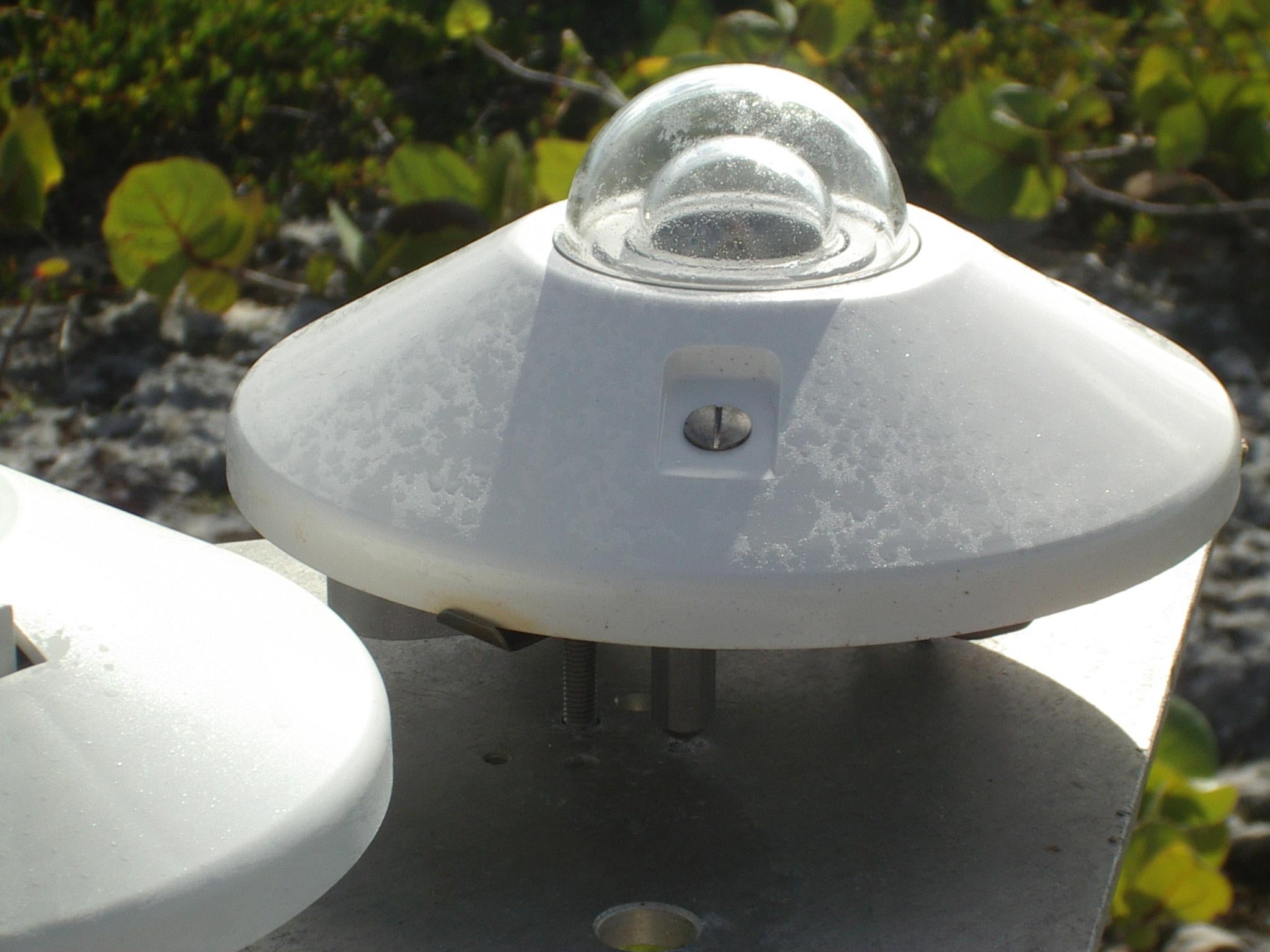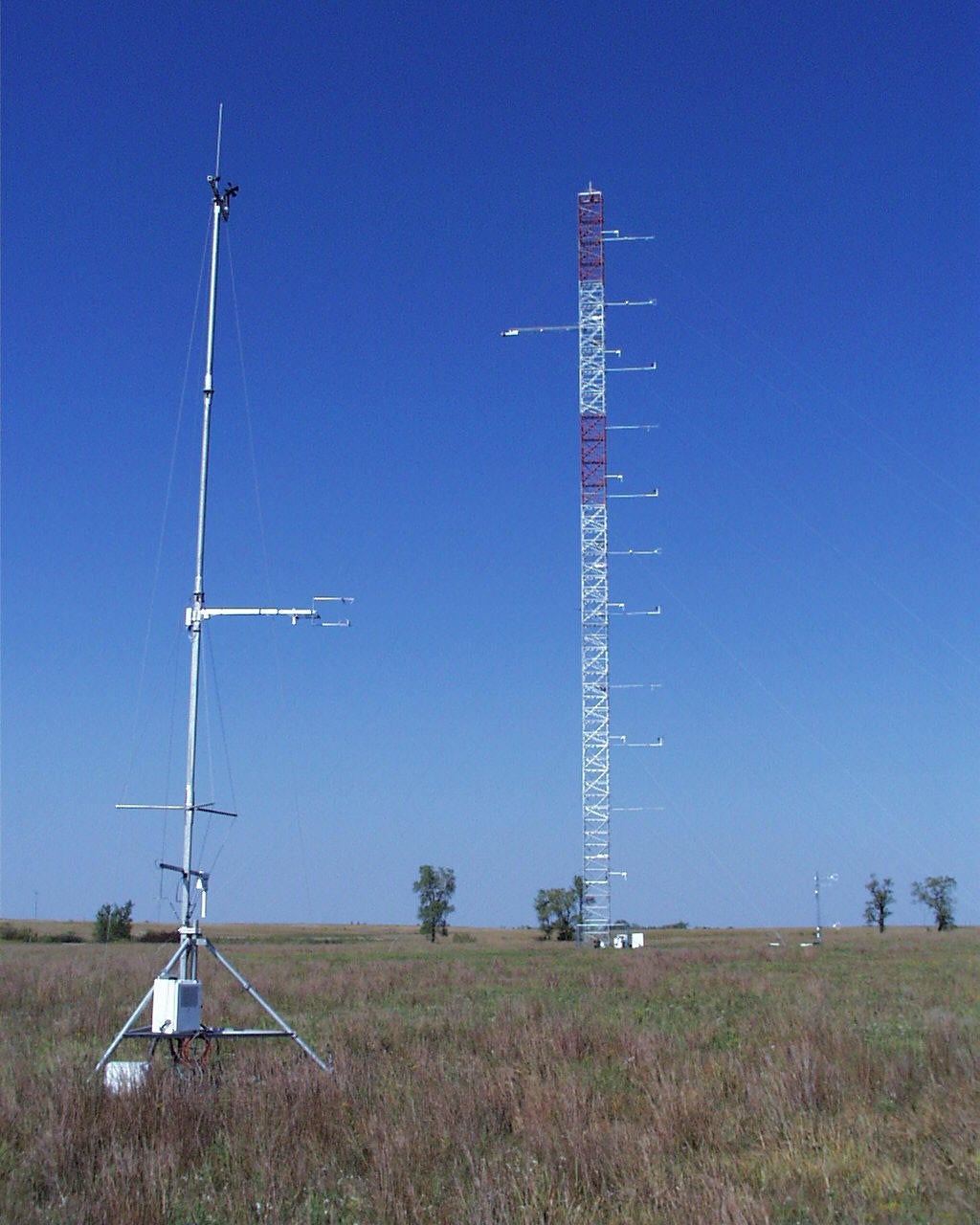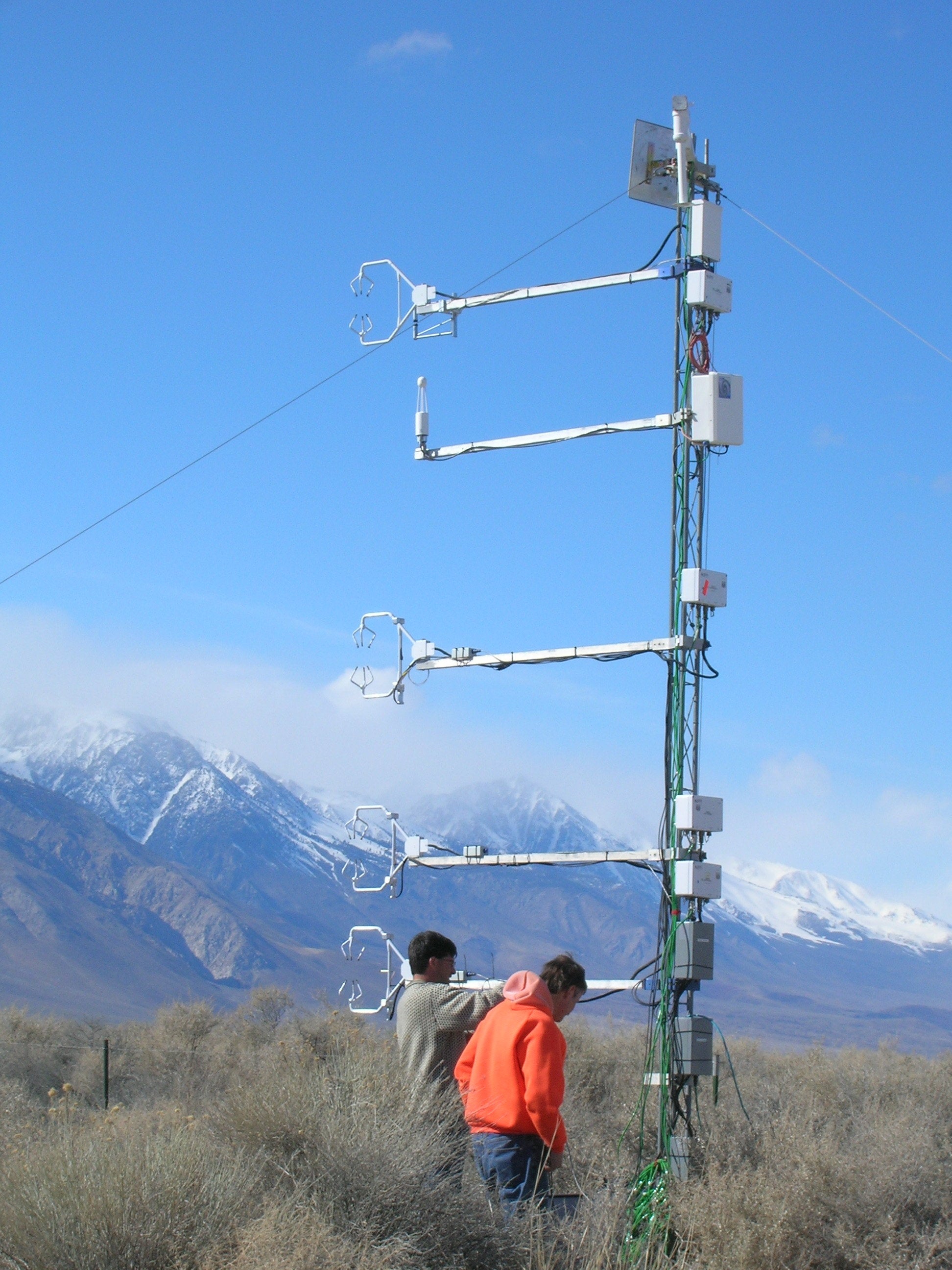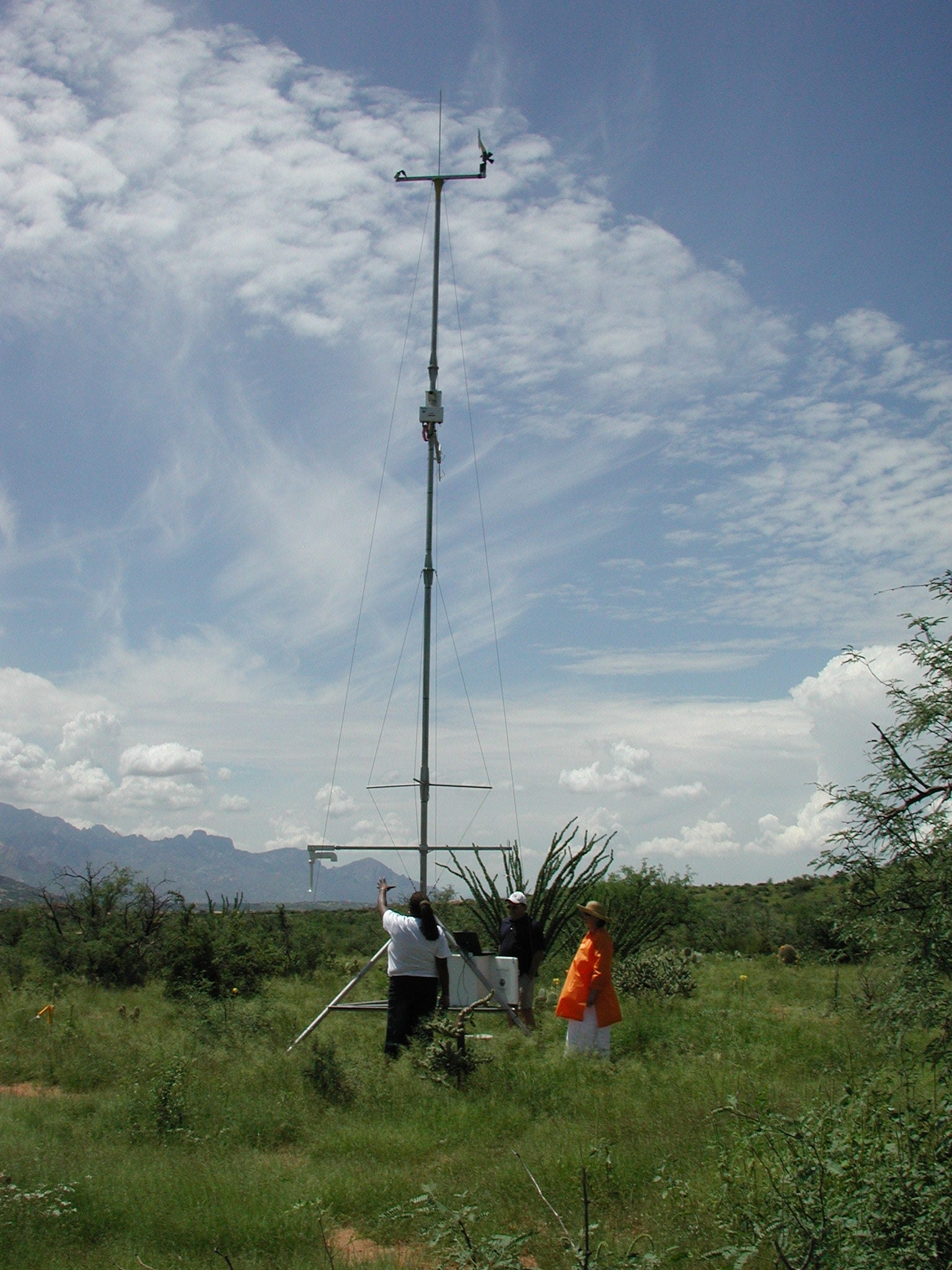Integrated Surface Flux System (ISFS)
The Integrated Surface Flux System (ISFS) is designed to study exchange processes between the atmosphere and Earth's surface.
ISFS combines the capabilities of a network of surface weather stations with the ability to support intensive micrometeorological research at a single site. Investigators can configure ISFS resources to match the research objectives of each field project.
Multiple sites can be instrumented to measure near-surface wind, temperature, humidity, pressure, and precipitation in the network mode. As needed, scientists can also request measurements of momentum fluxes, sensible and latent heat fluxes, short-wave and long-wave radiation, soil temperature, soil moisture, and soil heat flux at each station.
In an intensive mode, multiple sensors can be deployed on an array of towers at a single site for a detailed examination of the atmospheric surface layer's turbulence structure. ISFS also supports user-supplied sensors with digital or analog outputs at data rates up to 2,000 samples/s.
ISFS integrates data from both network and intensive modes with a common data ingest, archival, and display system. Solar power, RF modems, and satellite data transmission provide sighting flexibility to permit ISFS to operate almost anywhere.
Data Products
- Data sets include 5-minute average and high rate (fast response sensors) statistics (through 2nd and 3rd order moments for turbulence variables) of all quantities measured. Average statistics of all variables, including the second-order moments needed to compute fluxes and limited third-order moments, are a standard product of ISFS and are available in real-time for display. Every data sample is archived to allow processing using spectral, wavelet, or conditional sampling methods.
- The project reports contain a description of the field site, instrumentation configuration, and data processing steps. For some projects, there are also plots of weather conditions, fluxes, etc.
Sensors

- Standard ISFS sensors are available for the following measurements: momentum, sensible heat, water vapor, carbon dioxide, and pressure fluxes by eddy-correlation; vertical profiles of wind, temperature, and humidity; radiation fluxes; soil temperature, soil moisture, and soil heat fluxes; and precipitation including size distribution. The ISFS sensors are a mix of commercial instruments and in-house developments. Whenever possible, each sensor has a microprocessor that provides sensor output in calibrated engineering units through a serial communications link.
- User-supplied or non-standard sensors can be readily accommodated by ISFS. Power and mounting are provided and the various data streams are easily integrated into the system.
- See the Sensor List for a table of supported sensors.
Citation
When referencing the NCAR Integrated Surface Flux System (ISFS) in publications or proposals, please use the identifier 10.5065/D6ZC80XJ -- for example as a citation:
NSF NCAR Earth Observing Laboratory. (1990). NCAR Integrated Surface Flux System (ISFS). NSF NCAR Earth Observing Laboratory. https://doi.org/10.5065/D6ZC80XJ
Additionally, please cite the First Use paper associated with this Facility/Instrument:
Sun, J., S.P. Burns, A.C. Delany, S.P. Oncley, T.W. Horst, and D.H. Lenschow, 2003: Heat Balance in the Nocturnal Boundary Layer during CASES-99. J. Appl. Meteor., 42 (11), 1649--1666. doi:10.1175/1520-0450(2003)042<1649:HBITNB>2.0.CO;2


